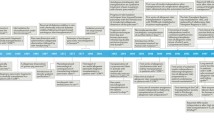Abstract
Islet cell transplantation is a promising treatment towards curing diabetes. Recently, the clinical outcomes have improved and this treatment has become a standard therapy for type 1 diabetic patients in several countries. Technical improvements of islet isolation include new pancreas preservation methods, new collagenase enzymes, and purification methods. In addition, immunosuppression protocols, especially T cell depletion induction and anti-inflammation strategies at the time of islet transplantation, have impact on the clinical outcomes. Several institutes have demonstrated that it is possible to achieve insulin independence after single-donor islet transplantation. This is a breakthrough since one of the major concerns of islet cell transplantation is inefficiency which exaggerates the donor shortage. Considering the huge numbers of diabetic patients, it is necessary to explore the cell source other than human donor pancreas. Islet transplantation using porcine islets is a promising treatment to overcome the donor shortage and in fact, clinical trials of neonatal porcine islet transplantations have been conducted. Stem-cell-derived insulin-producing cells have been created and the clinical trials of such cells might happen once current hurdles will be overcome. With advanced islet transplantation, it is desirable that diabetes would be converted from non-curable disease to curable disease.
Access this chapter
Tax calculation will be finalised at checkout
Purchases are for personal use only
Similar content being viewed by others
References
American Diabetes Association. Diagnosis and classification of diabetes mellitus. Diabetes Care. 2010;33(suppl1):S62–9.
Shapiro AM, Lakey JR, Ryan EA, et al. Islet transplantation in seven patients with type 1 diabetes mellitus using a glucocorticoid-free immunosuppressive regimen. N Engl J Med. 2000;343:280–8.
Ryan EA, Paty BW, Senior PA, Bigam D, Alfadhli E, Kneteman NM, Lakey JR, Shapiro AM. Five-year follow-up after clinical islet transplantation. Diabetes. 2005;54(7):2060–9.
Shapiro AM, Ricordi C, Hering BJ, et al. International trial of the Edmonton protocol for islet transplantation. N Engl J Med. 2006;355:1318–30.
Shapiro AMJ. Strategies towards single-donor islets of Langerhans transplantation. Curr Opin Organ Transplant. 2011;16:627–31.
Barton FB, Rickels MR, Alejandro R, et al. Improvement in outcomes of clinical islet transplantation: 1999-2010. Diabetes Care. 2012;35:1436–45.
Wang Y, Danielson KK, Ropski A, et al. Systematic analysis of donor and isolation factor’s impact on human islet yield and size distribution. Cell Transplant. 2013;22:2323–33.
Matsumoto S, Okitsu T, Iwanaga Y, et al. Successful islet transplantation from non-heart-beating donor pancreata using modified Ricordi islet isolation method. Transplantation. 2006;82:460–5.
Matsumoto S, Okitsu T, Iwanaga Y, et al. Insulin independence after living donor distal pancreatectomy and islet allotransplantation. Lancet. 2005;365:1642–4.
Matsumoto S, Rigley TH, Qualley SA, et al. Efficacy of the oxygen-charged static two-layer method for short-term pancreas preservation and islet isolation from nonhuman primate and human pancreata. Cell Transplant. 2002;11:769–77.
Matsumoto S, Takita M, Chaussabel D, et al. Improving efficacy of clinical islet transplantation with iodixanol based islet purification thymoglobulin induction and blockage of IL-1-beta and TNF alpha. Cell Transplant. 2011;20:1641–7.
Paushter DH, Qi M, Danielson KK, et al. Histidine-tryptophan-ketoglutarate and University of Wisconsin solution demonstrate equal effectiveness in the preservation of human pancreata intended for islet isolation: a large-scale, single-center experience. Cell Transplant. 2013;22:1113–21.
Matsumoto S, Noguchi H, Shimoda M, et al. Seven consecutive successful clinical islet isolations with pancreatic ductal injection. Cell Transplant. 2010;19:291–7.
Shimoda M, Itoh T, Sugimoto K, et al. Improvement of collagenase distribution with the ductal preservation for human islet isolation. Islets. 2012;4:130–7.
Ricordi C, Lacy PE, Finke EH, Olack BJ, Scharp DW. Automated method for isolation of human pancreatic islets. Diabetes. 1988;37:413–20.
Shimoda M, Itoh T, Iwahashi S, et al. An effective purification method using large bottles for human pancreatic isolation. Islets. 2012;4:380–404.
Hering BJ, Kandaswamy R, Ansite JD, et al. Single-donor, marginal-dose islet transplantation in patients with type 1 diabetes. JAMA. 2005;293:830–5.
Groth CG, Korsgren O, Tibell A, et al. Transplantation of porcine fetal pancreas to diabetic patients. Lancet. 1994;344:1402–4.
Van der Laan LJ, Lockey C, Griffeth BC, et al. Infection by porcine endogenous retrovirus after islet xenotransplantation in SCID mice. Nature. 2000;407:90–4.
Cozzi E, Tallacchini M, Flanagan EB, et al. The International Xenotransplantation Association consensus statement on conditions for undertaking clinical trials of porcine islet products in type 1 diabetes – Chapter 1: Key ethical requirements and progress toward the definition of international regulatory framework. Xenotransplantation. 2009;16:203–14.
Matsumoto S, Tan P, Baker J, et al. Clinical porcine islet xenotransplantation under comprehensive regulation. Transplant Proc. 2014;46:1992–5.
Kroon E, Martinson LA, Kadoya K, et al. Pancreatic endoderm derived from human embryonic stem cells generates glucose-responsive insulin-secreting cells in vivo. Nat Biotechnol. 2008;26:443–52.
Takahashi K, Tanabe K, Ohnuki M, et al. Induction of pluripotent stem cells from adult human fibroblasts by defined factors. Cell. 2007;131:861–72.
Takeuchi H, Nakatsuji N, Suemori H. Endodermal differentiation of human pluripotent stem cells to insulin-producing cells in 3D culture. Sci Rep. 2014;4:4488. doi:10.1038/srep04488. Article number: 4488.
Author information
Authors and Affiliations
Corresponding author
Editor information
Editors and Affiliations
Abbreviations
Abbreviations
- ATP:
-
Adenosine triphosphate
- DCD:
-
Deceased cardiac death
- ES cells:
-
Embryonic stem cells
- GLP-1:
-
Glucagon-like peptide-1
- HTK solution:
-
Histidine-tryptophan-keto-glutarate solution
- IL-1:
-
Interleukin-1
- iPS cells:
-
Inducible pluripotent stem cells
- PFC:
-
Perfluorocarbon
- TNF:
-
Tumor necrosis factor
- UW solution:
-
University of Wisconsin solution
Rights and permissions
Copyright information
© 2015 Springer Science+Business Media New York
About this chapter
Cite this chapter
Matsumoto, S., Shimoda, M. (2015). Islet Cell Transplantation: New Techniques for an Old Disease. In: Latifi, R., Rhee, P., Gruessner, R. (eds) Technological Advances in Surgery, Trauma and Critical Care. Springer, New York, NY. https://doi.org/10.1007/978-1-4939-2671-8_42
Download citation
DOI: https://doi.org/10.1007/978-1-4939-2671-8_42
Publisher Name: Springer, New York, NY
Print ISBN: 978-1-4939-2670-1
Online ISBN: 978-1-4939-2671-8
eBook Packages: MedicineMedicine (R0)




